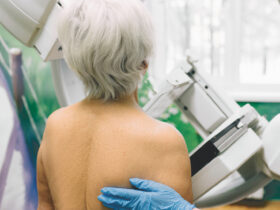By Dennis O. Sagini, MD
 When it comes to orthopedic hand surgery and recovery, splints serve as one of the most critical components in ensuring optimal healing and functional restoration. At our practice, we’re excited to announce that we’ve recently obtained our Durable Medical Equipment (DME) license, allowing us to provide custom splints and orthotic devices directly from our office for enhanced patient convenience and care coordination.
When it comes to orthopedic hand surgery and recovery, splints serve as one of the most critical components in ensuring optimal healing and functional restoration. At our practice, we’re excited to announce that we’ve recently obtained our Durable Medical Equipment (DME) license, allowing us to provide custom splints and orthotic devices directly from our office for enhanced patient convenience and care coordination.
Understanding Splints in Hand Surgery
Splints are external devices designed to support, protect, and immobilize injured or surgically treated hands and fingers. Unlike casts, splints offer controlled flexibility and can be adjusted as healing progresses. According to Dr. Dennis Sagini, MD, “Splints are invaluable tools that bridge the gap between surgical intervention and full functional recovery. They provide the precise support needed while allowing for gradual mobilization as tissues heal.”
The primary functions of splints in orthopedic hand surgery include protecting surgical sites from trauma, maintaining proper alignment of bones and joints, preventing contractures and stiffness, reducing pain and swelling, and facilitating controlled movement during rehabilitation phases.
Types of Splints for Different Conditions
Different hand conditions require specific splinting approaches. Static splints provide complete immobilization and are typically used immediately after surgery or for fracture management. Dynamic splints incorporate springs or elastic components to allow controlled movement while maintaining support. Serial static splints are progressively adjusted to gradually restore range of motion.
Common conditions that benefit from splinting include fractures of the hand and wrist, tendon repairs and transfers, ligament injuries, post-surgical immobilization, arthritis management, and nerve compression syndromes like carpal tunnel syndrome.
The Treatment and Recovery Process
Dr. Sagini emphasizes that proper splint application is crucial for successful outcomes. “The timing, duration, and type of splinting must be precisely tailored to each patient’s specific condition and surgical procedure. Too little support can compromise healing, while excessive immobilization can lead to stiffness and prolonged recovery.”
The splinting process typically begins immediately after surgery with initial protective splinting for wound healing and tissue protection. This progresses to transitional splinting that allows for gentle, controlled movement, followed by functional splinting to support return to daily activities, and finally weaning from splint use as strength and mobility improve.
Benefits of In-Office Splint Services
With our new DME license, patients can now receive immediate splint fabrication and fitting without the inconvenience of visiting separate facilities. This streamlined approach offers several advantages including immediate post-surgical splint application, custom fitting by trained specialists, convenient follow-up adjustments, coordinated care between surgery and rehabilitation, and reduced wait times and scheduling complications.
Dr. Sagini notes, “Having the ability to provide splints directly in our office means we can ensure perfect fit and immediate adjustments. This level of control over the entire treatment process significantly improves patient outcomes and satisfaction.”
Conclusion
Splints represent a cornerstone of successful orthopedic hand surgery recovery. With our enhanced in-office capabilities, patients can now experience seamless, coordinated care from initial consultation through complete recovery. Our commitment to providing comprehensive orthopedic hand care, combined with our new DME services, ensures that every patient receives the highest standard of treatment and the best possible outcomes for their hand and wrist conditions. Contact our office at 239-302-3216 to schedule a consultation and take the first step toward pain-free movement and improved quality of life.
Dennis O. Sagini, MD
TDr. Sagini is an orthopedic surgeon with specialization in hand and upper extremity surgery. He specializes in arthritis of the hand, nerve compression, muscle and tendon injury, fracture care, and upper extremity dysfunction.
He completed his Bachelors of Science in Microbiology from the University of Oklahoma in Norman, Oklahoma in 1998 and his Doctor of Medicine at Temple University in Philadelphia, PA in 2002. It was during medical school training that Dr. Sagini developed an interest in orthopaedic surgery. His residency in orthopaedic surgery was completed at Howard University Hospital, Washington, DC. Dr. Sagini completed his fellowship training in Hand and Upper Extremity surgery at the University of Pittsburgh Medical Center in Pittsburgh, PA.
Dr. Sagini is a member of the American Academy of Orthopaedic Surgeons, the American Medical Association, the Florida Medical Association, and the American Society for Surgery of the Hand.
Dr. Sagini is active in research and community service and has a passion for overseas medical mission work. He also enjoys running, traveling, listening to music, cooking, tennis, and spending time with his family and friends.
239-302-3216 | saginimd.com
13691 Metro Pkwy, Suite 400
Fort Myers, FL 33912









